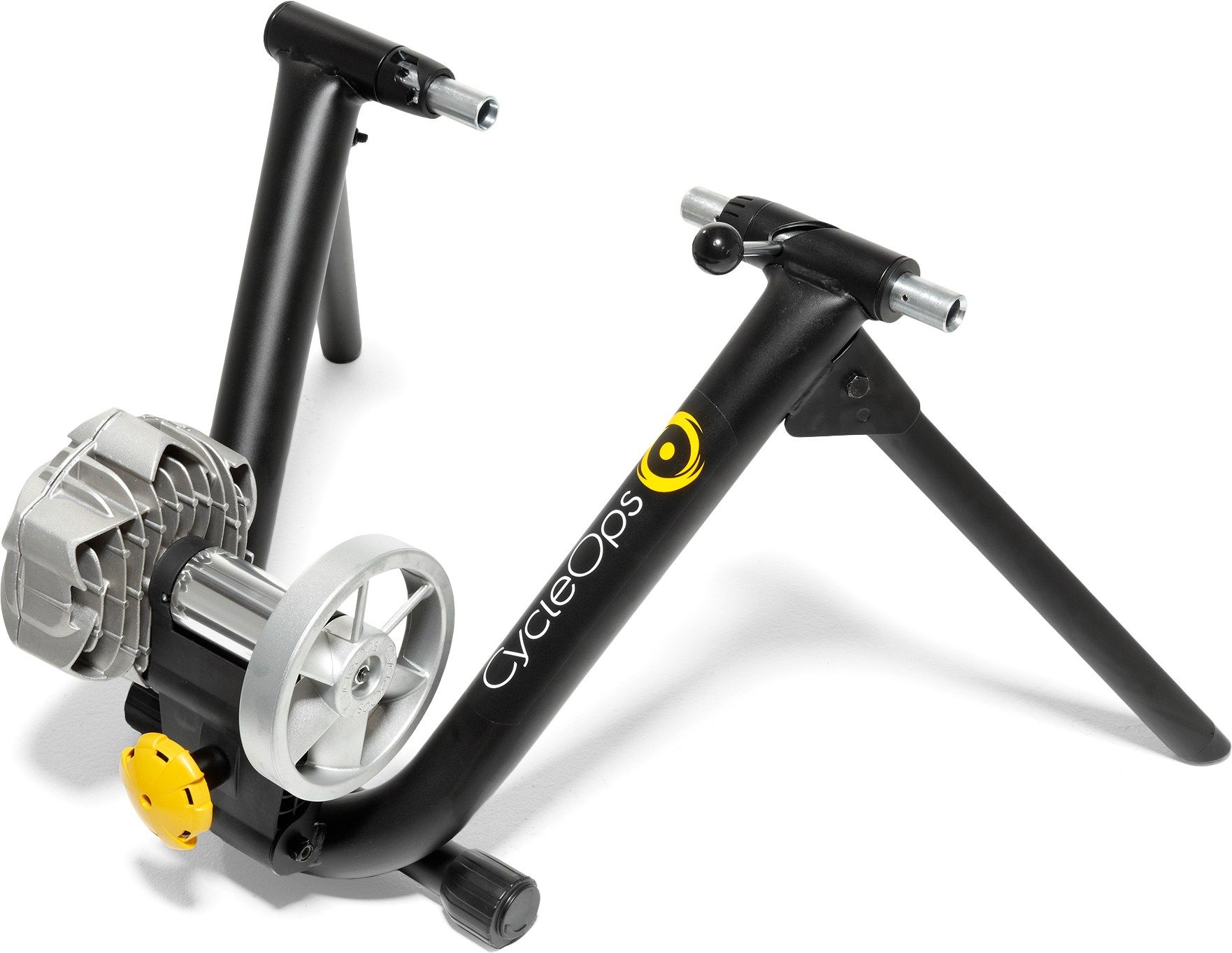
If you’re hoping to improve your balancing skills or to improve your pedal stroke, rollers are your best bet. (Smart trainers can be direct drive, magnetic or fluid, though most tend to be direct drive.) If your bike has a powermeter that’s ANT+ or Bluetooth-compatible, you can use a ‘dumb trainer’ and still connect to apps like Zwift. Smart trainers are also the easiest, but not the only, way to get connected to virtual racing. Need to push 220 watts for 17 minutes? Just enter that in, and your trainer will keep you pedaling at that wattage no matter how tough it gets. Smart trainers use Bluetooth, ANT+ or WiFi to pair with an app and dial in your training-and yes, they typically need to be plugged into an outlet. Direct drive trainers are more expensive, though, and most are even pricier because they’re ‘smart trainers.’ They also require a cassette that works with your derailleur: Many come stock with 11-speed cassettes, so if you have a 10-, 12- or 13-speed, you’ll need to swap out the trainer cassette. That means your tires won’t get worn out, and you won’t have to swap your knobby tire for a slick one to get a smooth pedaling experience.ĭirect drive also tends to feel more natural, like you’re riding on the road, compared to the potentially “sticky” feeling of magnetic or hydraulic trainers. Direct Drive Trainersĭirect drive trainers are great for off-road riders because your rear wheel is removed from the equation, making it just as easy to mount a mountain bike as a road bike. If you have a newer bike with a thru axle connecting your rear wheel to the frame, you may need to buy a new rear skewer that will be compatible with your trainer. Most rollers are metal, which will be the most durable, but some have a grippy surface for better traction.Īlso called “wheel on” trainers (because you leave the rear wheel on the bike), higher-end models will have larger, heavier flywheels attached to them to improve the “road feel” and smooth out their response to changing speeds. Larger diameter rollers will usually be quieter than narrow rollers with small tire contact patches. Magnetic and fluid “wheel on” trainers press the wheel against a roller. What kinds of indoor cycling trainers are available? Frequently Asked Questions About Indoor Trainers.What kinds of indoor cycling trainers are available?.

Here, we’re looking at the different types of indoor trainers, and sharing our favorites from years of testing, sweating, and racing… Table of Contents: It’s a great solution for easy indoor training, and the technology has become so advanced that a stationary trainer can even help you race virtually with other cyclists from around the world! If you’re new to cycling, an indoor bike trainer (aka stationary bike trainer) refers to a device that you hook your bike into-either with or without the rear wheel, depending on the model-allowing you to turn your existing bicycle into an indoor stationary bike. Or maybe you’re just trying to get into the habit of pedaling and need a simple setup that won’t break the bank. Maybe you’ve heard about racing on the online platform Zwift and you like the idea of riding in groups even when you’re stuck inside. And unless you’re already riding indoors a lot, it can be hard to know which features you really need. There’s a huge range of products in a wide range of prices, from $70 to $1,500. Learn more.Ĭhoosing an indoor trainer for riding inside can be tricky.

Support us! BikeRumor may earn a small commission from affiliate links in this article.


 0 kommentar(er)
0 kommentar(er)
